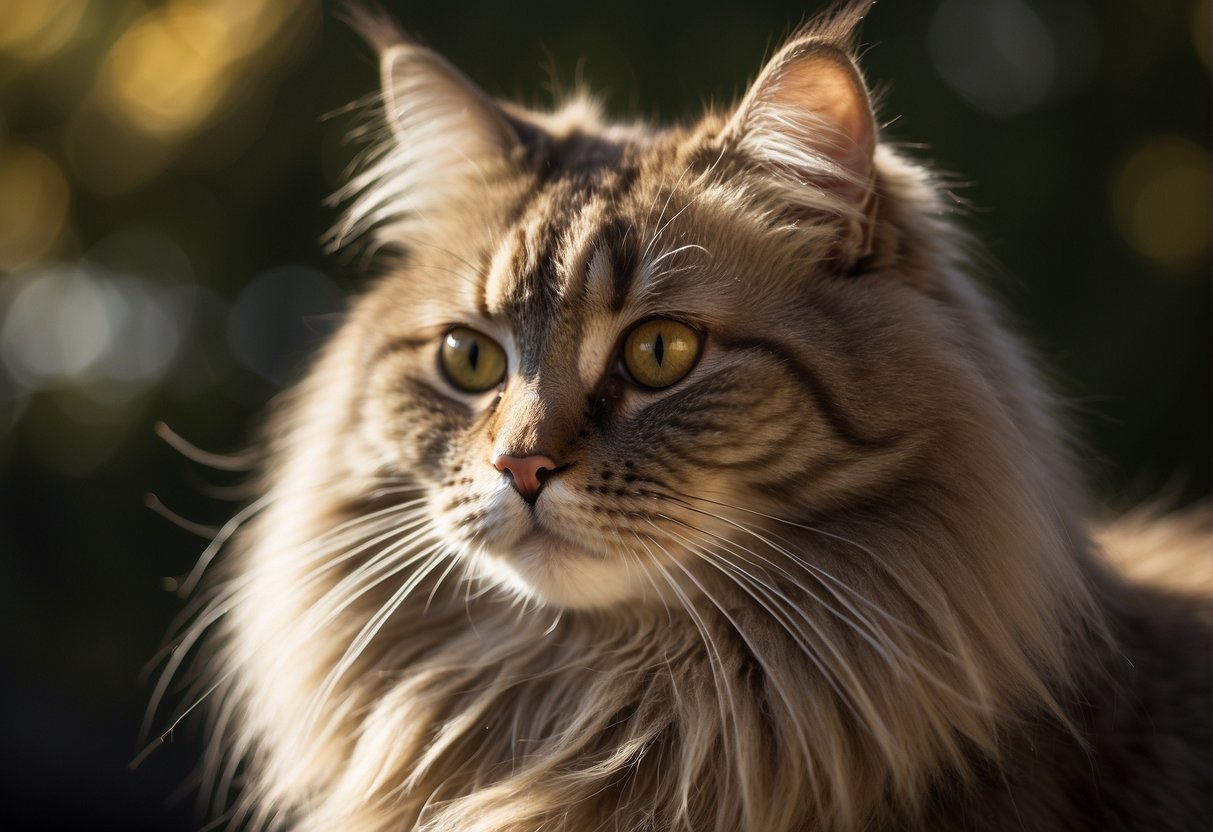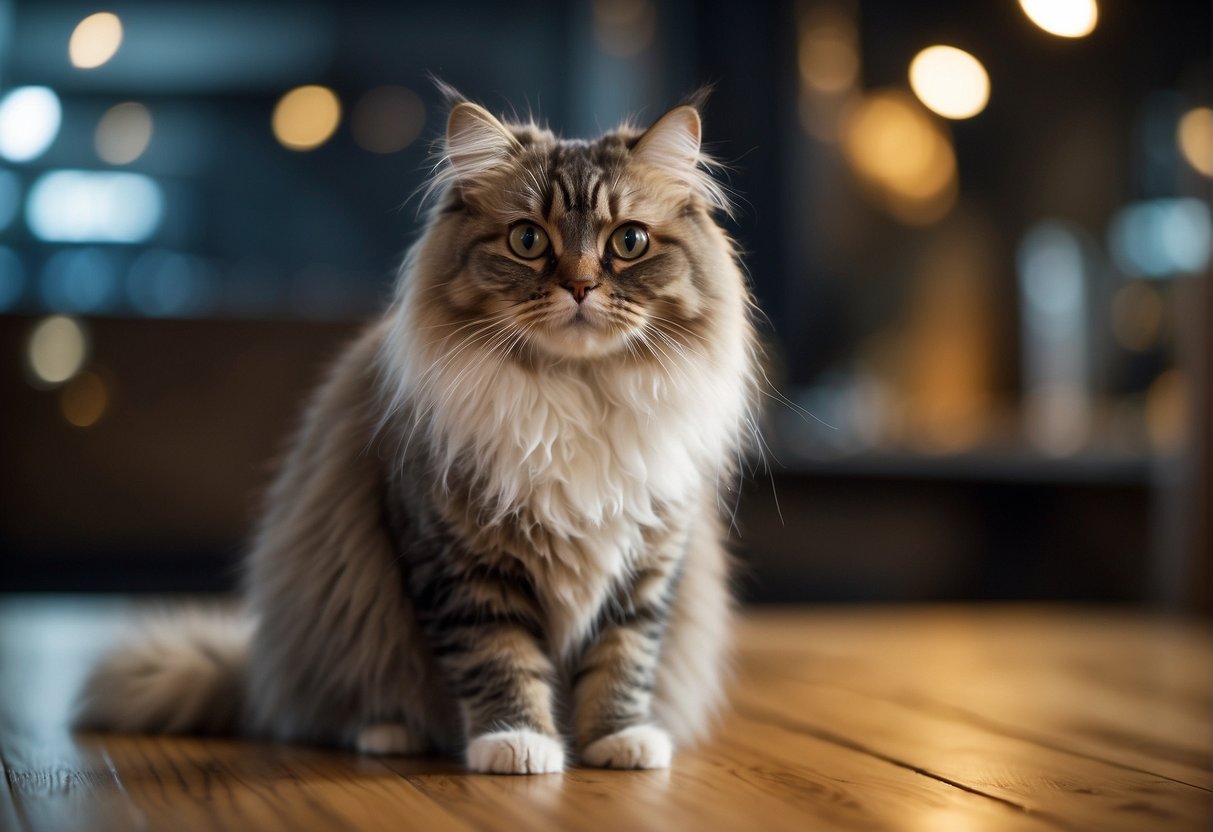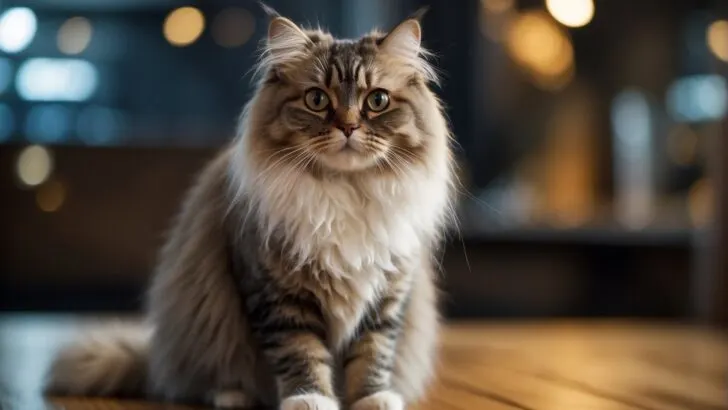Determining whether your cat has a double coat is an essential aspect of understanding their grooming needs. A double coat consists of a softer, dense undercoat lying beneath a layer of longer, protective guard hairs.
When I groom my feline friend, especially during shedding season, I notice a significant amount of fluffy undercoat being removed alongside the smoother topcoat, indicating a double-layered coat common in many breeds, such as the Siberian and the Norwegian Forest Cat.

Cats with double coats may require more grooming attention to prevent mats and tangles, which I’ve found through regular brush sessions helps keep their fur in top condition.
A well-groomed double coat can provide insulation and protection from various weather conditions, which is especially noticeable when my cat is unbothered by the cooler temperatures during the fall.
If you’re a cat owner looking to determine the type of coat your furry companion has, a hands-on approach is often the most telling.
Running your fingers through their fur should reveal if there’s a thick, woolly undercoat beneath the sleek guard hairs. This second layer is dense and plush, differentiating double-coated breeds from their single-coated counterparts, who only have one type of fur that is usually the same texture throughout.
Identifying Double Coats in Cats

When determining the type of coat your feline friend has, understanding the specific characteristics can help you identify a double coat. Recognizing the physical traits and breed-specific indicators is key to caring for your cat’s fur appropriately.
Recognizing Types of Cat Coats
Cats have a diverse range of coat types that often relate to their breed and genetics. Typically, there are four main categories of cat coats:
- Shorthaired: These cats have a single coat that lacks a thick underlayer.
- Longhaired: Long-haired cats can have either single or multiple layers of fur.
- Curly-haired: Breeds like Devon Rex and Cornish Rex have a unique coat structure with less undercoat or different textures.
- Hairless: Cats like the Sphynx have no fur, but they can still possess a fine layer of down.
Among these categories, both long-haired and short-haired cats can potentially have double coats.
Physical Characteristics of a Double Coat
If your cat has a double coat, it will exhibit two layers:
- Undercoat: A dense, insulating layer of fluffy fur that keeps the cat warm.
- Guard Hairs or Topcoat: The longer, coarser outer layer which protects against the elements.
To check for a double coat, here’s what you can do:
- Feel the Fur: Gently run your fingers through your cat’s fur. If it feels soft and dense near the skin before transitioning to a more wiry or sleek texture, it suggests a double coat.
- Observe the Shedding: Double-coated cats typically shed more, especially during seasonal changes. They may require more frequent grooming to manage the excess fur.
Breed-Specific Coat Traits
Not all cat breeds are the same when it comes to fur. Here are some examples of double-coated breeds:
- Maine Coon: Known for their thick, water-resistant double coats that keep them warm in cold climates.
- Siberian: Another breed with a luxuriously dense double coat, designed to withstand harsh winters.
- Norwegian Forest Cat: Similar to the Maine Coon, with a thick double coat adapted to the Scandinavian cold.
- Persian: These cats often have a long, fine outer coat with a thick undercoat.
In contrast, single-coated breeds like the Manx or the Scottish Fold might not have a dense undercoat. Notably, Rex breeds, despite having a curled coat, can sometimes lack an undercoat, making them single-coated.
Whether you’re a new cat parent or an enthusiast, recognizing these traits will help you provide the best care for your cat’s coat. A proper understanding of fur types, especially double coats, ensures that you’re equipped with the knowledge to keep your feline’s coat healthy and beautiful.
Proper Grooming Techniques
Proper grooming is essential for the health and comfort of your cat, especially if they have a double coat. Regular grooming prevents matting, reduces hairballs, and helps manage shedding.
Brushing Fundamentals
When it comes to brushing your cat’s fur, it’s important to select the right tools. A slicker brush is ideal for the outer coat, helping to smooth out the fur and remove loose hairs.
For the dense undercoat, a long-toothed comb can reach deeper to detangle and remove any debris trapped beneath the top layer. Brushing should be done gently to prevent any discomfort:
- Start with a slicker brush, using gentle strokes to remove loose hairs.
- Switch to a long-toothed comb for the undercoat, carefully working through any tangles or mats.
Bathing and Coat Care
Bathing your cat is not typically needed as often as brushing, but when necessary, it should be done with care. Use a cat-specific shampoo and ensure the water temperature is comfortable. Bathing helps manage shedding and keeps the coat clean from excess oils and dirt:
- Wet the fur thoroughly, avoiding the face.
- Apply cat-friendly shampoo and massage gently.
- Rinse thoroughly to prevent residue that can cause skin irritation.
Managing Shedding and Mats
Shedding patterns vary with seasons and can lead to mats if not managed properly. Incorporating a grooming routine adapted to your cat’s shedding greatly reduces the likelihood of tangles forming:
- Brush several times a week during peak shedding seasons.
- For cats prone to mats, use a de-matting comb or seek professional grooming assistance.
- Keep an eye on fur texture and density changes, as they can indicate when additional grooming may be necessary.
Health and Maintenance
Maintaining a healthy double coat in cats requires a twofold approach: ensuring a balanced diet for optimal coat health and identifying/solving skin issues promptly to prevent discomfort and more severe health problems.
Nutrition and Coat Health
To ensure your cat’s double coat stays shiny and smooth, nutrition plays a crucial role. A well-balanced diet enriched with essential fatty acids, like omega-3 and omega-6, can contribute significantly to the luster and health of your cat’s fur. Here’s what to include in your furry friend’s diet:
- High-quality cat food: Choose a brand that lists meat as the first ingredient.
- Supplements: Fish oil supplements can enhance coat health.
- Protein is crucial for maintaining a healthy coat. Ensure the cat food you select is high in animal proteins for that extra glossy and smooth appearance.
Remember, sudden changes in your cat’s coat, such as it becoming dull or patchy, could indicate dietary deficiencies or health issues.
Identifying and Treating Skin Issues
Healthy skin is the foundation of a healthy coat. Regularly check your cat for signs of fleas, ticks, or bumps that could suggest infections or allergies. The presence of such parasites can lead to skin issues, which will affect the coat’s health. Here’s what to look out for:
- Bald patches or excessive grooming: These may be signs of skin irritation.
- Bumps on the skin: Could be caused by parasites or infections.
Insect bites can also lead to skin problems, affecting the coat’s texture and your cat’s well-being. Immediate and effective flea and tick treatments can help soothe irritated skin and restore coat health. If you’re unsure about skin irregularities, it’s best to consult a vet for a professional diagnosis and treatment plan.
Taking care of your cat’s double coat involves regular grooming, but it’s equally important to look beneath the fur. Vigilance in nutrition and skin care will keep your companion’s coat healthy, aiding in temperature regulation and overall comfort.

My name is James, and welcome to FAQCats!
Along with our team of cat owners, expert pet enthusiasts, and pet professionals, we aim to write engaging helpful, engaging content about cats. At FAQCats we strive to provide content that’s accurate and fun to read. Our team writes about everything related to cats; even the most complex of topics. Through extensive research and caring for our own fur-pals, we’re able to provide something cat owners worldwide will love. Have a look around, and leave us feedback anytime!

